November 26, 2019
Movember’s marketing automation strategy
In 2003, Travis Garone and Luke Slattery were enjoying a quiet beer at a bar in Melbourne. Their conversation turned to recurring fashion trends and how the mustache, a fixture in past decades, was nowhere to be seen in recent trends; the two friends joked about bringing the mustache back in fashion. But when the conversation turned to a mutual friend’s mother who was raising money for breast cancer, Travis and Luke realized that a campaign about men’s health and prostate cancer did not exist. With this inspiration, Travis and Luke decided to see if they could find 30 men who would each donate $10 to support men’s health and grow a mustache in solidarity for the cause.
Since that fateful conversation in 2003, Movember has grown into an international phenomenon. And over the years, Travis and Luke realized that the simple act of growing a mustache ignited interest and dialogue that could benefit a worthy cause. Today, the Movember Foundation is one of the world’s largest not-for-profit organizations. Dedicated to fighting preventable illnesses affecting men worldwide, the Movember Foundation has successfully created a craze that people have deemed actually worth following: growing and wearing a mustache in support of men’s health for the entire month of November.
What began as a way to bring back a (questionable) fashion trend among men has now become a viral marketing juggernaut that most not-for-profit organizations and businesses could only dream of. In this article, we discuss some of the ways the Movember Foundation has used marketing to grow its cause and how you can incorporate these marketing lessons into your own campaigns.
Using technology to fuel growth
Technology has been a vital component in Movember’s growth story. In 2004, the Movember team grew to 4 people thanks to the addition of Adam Garone and Justin Coghlan. By 2006, the campaign became too big for the 4 friends to manage during their spare time, so Adam and Luke began working for Movember full time and hiring employees.
Additionally, like many not-for-profit organizations, the Movember team used fragmented IT systems that didn’t talk to one another. They also kept a lot of their data in spreadsheets and a lot of manual work was required to generate reports.
As the Movember movement continued to grow, these factors combined made it difficult (and time-consuming) for the foundation to operate. In order to push the Movember movement further, the team had no choice but to evolve, adopt new technology, and find better ways for teams to collaborate and brainstorm together. Today, the Movember machine is now officially called the Movember Foundation, a global charity employing a large team across over 20 countries. To date, the Movember Foundation has raised over $837 million and initiated a number of global projects in support of men’s health. Their efforts have also seen Movember fund over 1,000 projects around the world to improve men’s health and access to care. With an ambitious goal to reduce the number of men prematurely dying of prostate cancer, suicide, and other preventable illnesses by 25% by 2030, the Movember machine is living proof that you can’t grow and scale a business (or a not-for-profit organization) without the right support systems.
Constantly innovating
Many businesses and not-for-profit organizations make the mistake of assuming that the product or solution it’s delivering is precisely what the market needs — this is a huge mistake. The market and your customers’ needs change over time; as a matter of fact, they are changing at a rapid rate, almost as fast as the technology they’re currently using.
In 2013, the Movember Foundation launched the Movember App to allow users to stay connected on the go. Through the app, users can track and share their Mo progress through photos and videos. The app also comprised a “Made in Movember” style guide to help participants and their friends decide which type of mustache to grow, to ensure their fundraising efforts are a success.
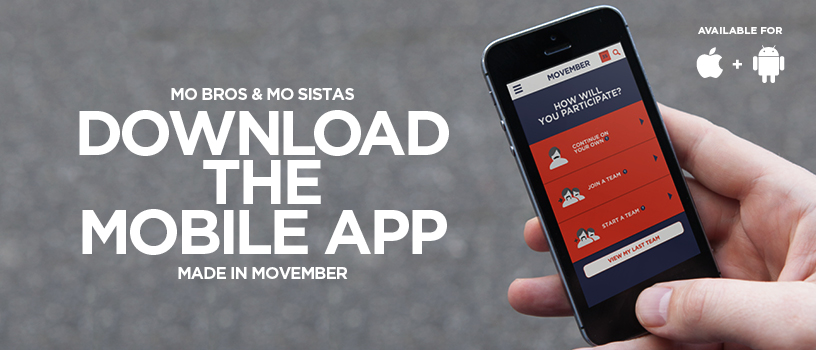
Additionally, the Movember Foundation started shifting its focus to include women in the cause. This happened after they’d discovered that almost 15% of their audience were female, a demographic that the Movember Foundation felt was being excluded. So in 2016, the foundation began encouraging females (dubbed “Mo Sistas”) to partake in the fundraising efforts, contributing to the conversation around men’s health, and committing to MOVE, a 30-day challenge designed for men and women alike to get active during November.
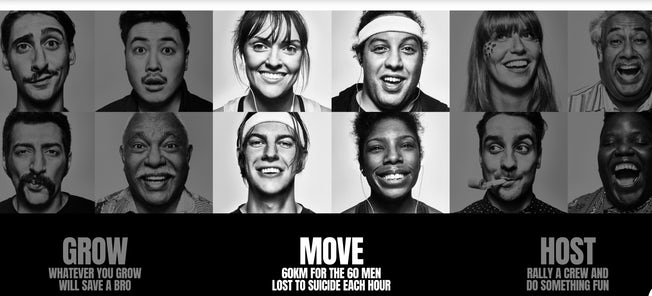
Targeting audiences at the right place and right time using multi-channel marketing
Multi-channel marketing is all about connecting with customers in the right place at the right time. This means utilizing a variety of marketing channels (for example, email, text messaging, social media, in-app messaging) to connect with people at different points in their decision-making process.
As we live in a multi-touch and multi-device world, the Movember Foundation knew that using a single channel to communicate with their audience was completely the wrong way to get their message across. Instead, they layered all their marketing channels on top of one another in order to increase brand awareness, participation rates, and donations.

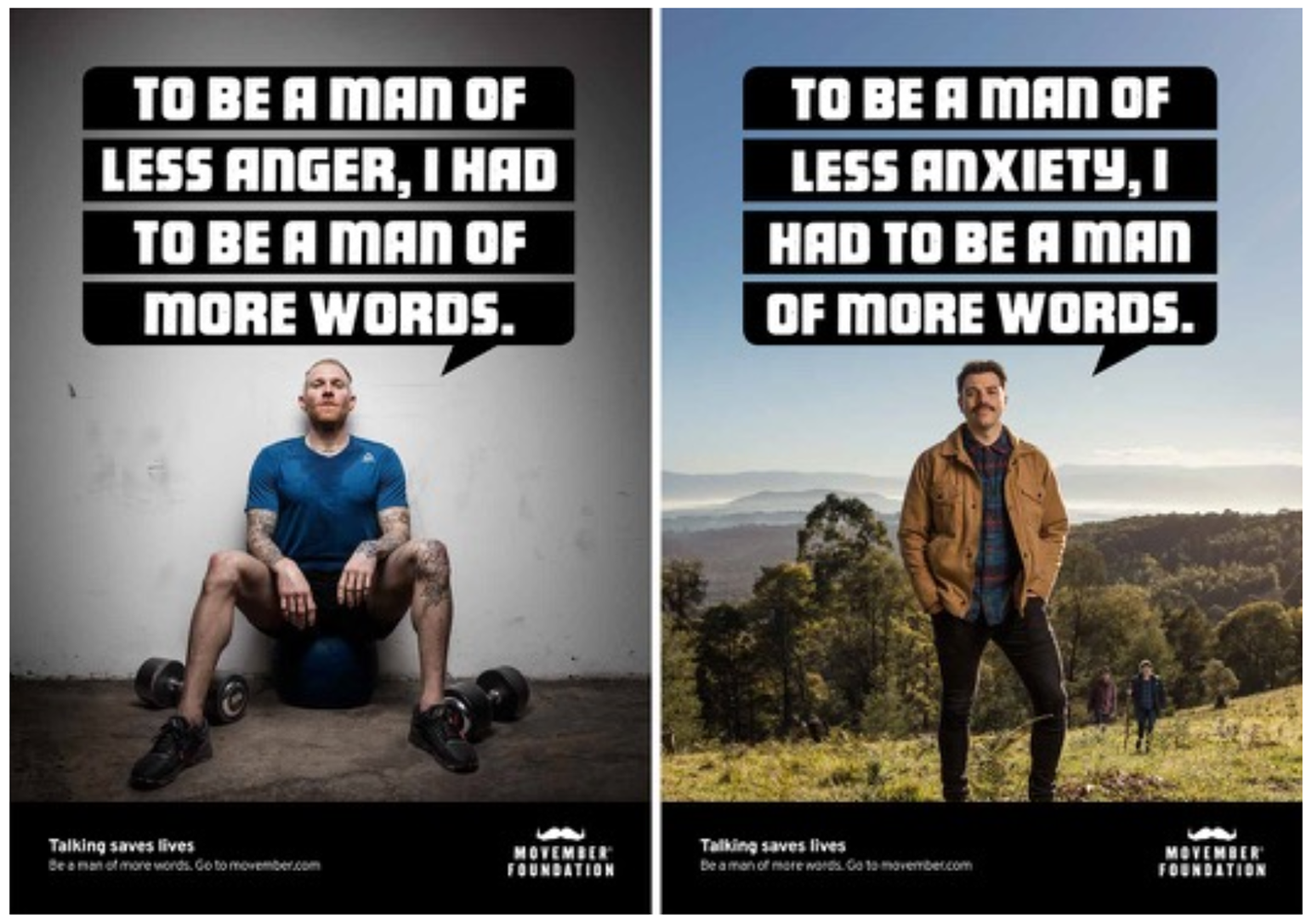
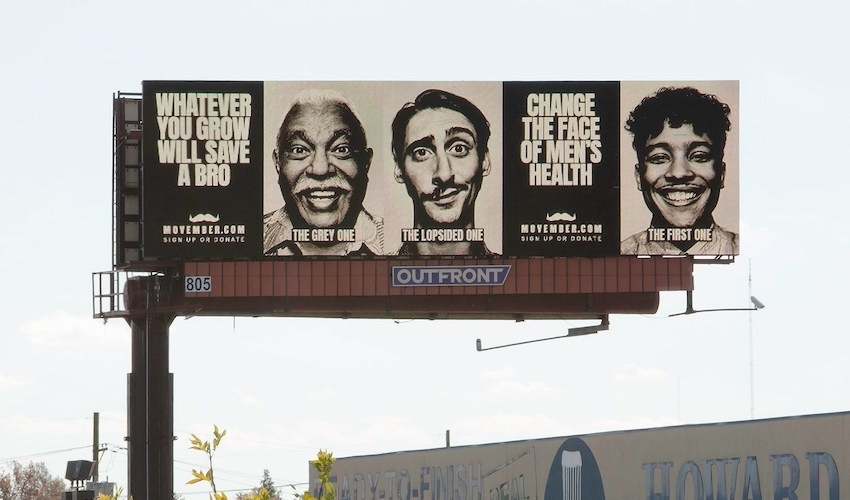
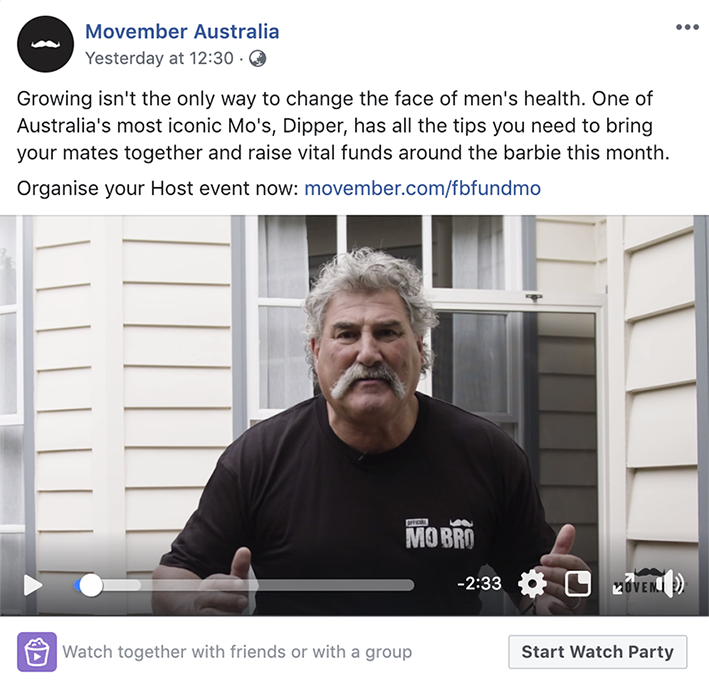
Movember YouTube channel
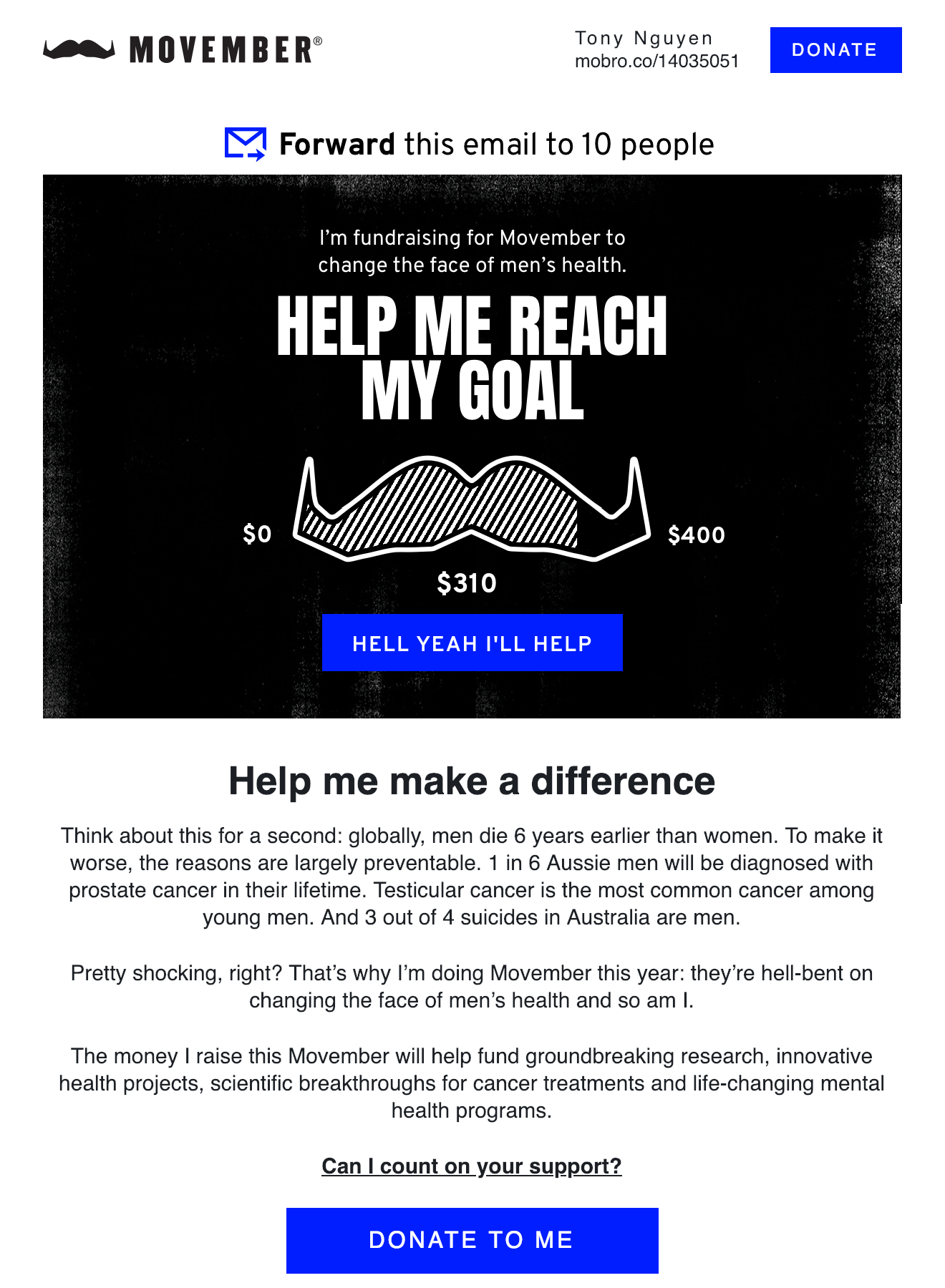
With the above 6 channels alone, the Movember Foundation has been able to send a strong, unified message about its cause — and compel users to take action.
Using humor to grab attention
Although Movember aims to raise money and awareness for an extremely serious cause, a considerable part of its appeal is its use of humor as a tool to tackle its cause. The idea of letting a mustache grow for an entire month may sound silly, but it’s effective. Why? Because people love to laugh. When it comes to advertising and marketing, humor is the element that breaks down walls and showcases a brand’s personality and its human side. After all, funny ads stand out from boring ads purely because they grab peoples’ attention.
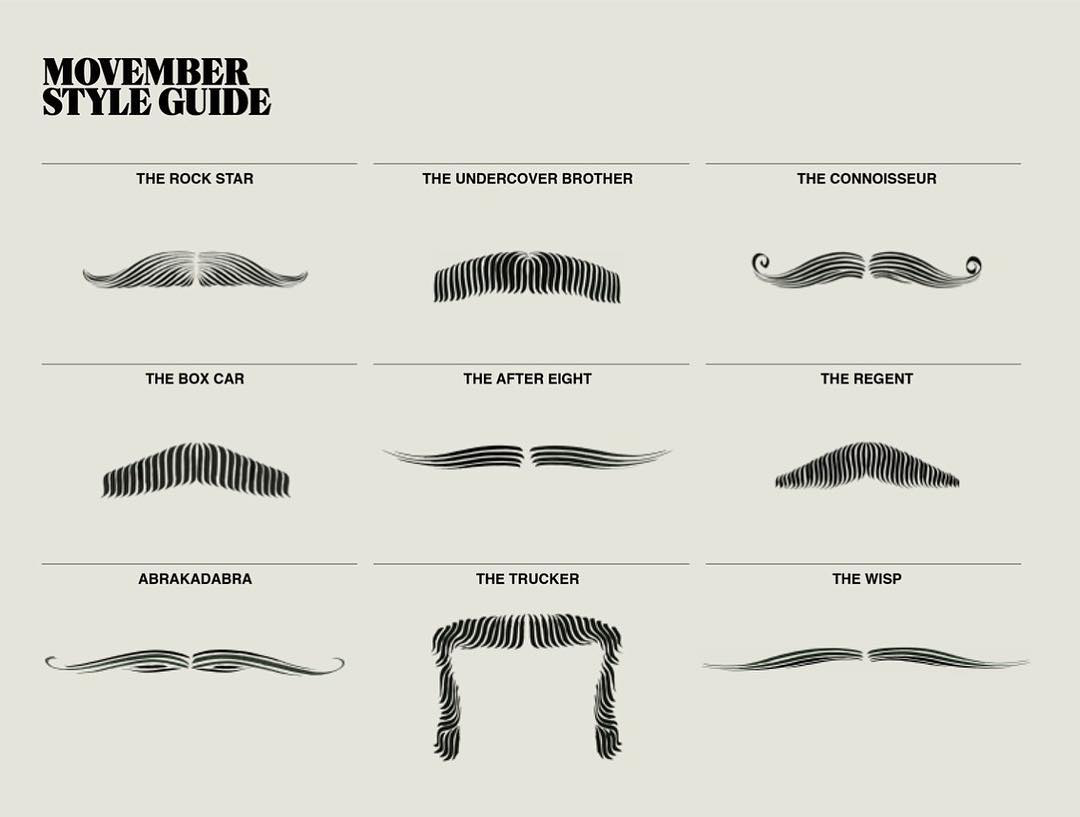
Humor is also an effective conversation starter. For example, seeing a co-worker sporting a mustache in the office during November presents an excellent opportunity to talk about men’s health, thus bringing awareness to the cause.
Personalizing customer journeys
Previously, the Movember team adopted a one-size-fits-all approach to communications. But as they gained better access to their data and as their donor base began to grow, they were able to provide a much more personalized marketing experience that’s specifically tailored to the individual. For not-for-profit organizations, personalization is crucial to ensuring that customer journeys are relevant and successful — it also shows donors and participants that you really know them.
To personalize their marketing, the Movember team can use Autopilot’s Smart Segments integration to segment its large database using variables such as sign-up location, gender, or participation type (for example, whether participants were growing a mustache or committing to Move by walking or running 60km over the course of a month). Additionally, contacts can also be segmented according to behaviors such as whether they had opened certain emails, filled out specific forms on the Movember website, or had interacted with in-app features.
For example, if a first-time Movember participant signs up to grow a mustache for the cause, an onboarding journey can be implemented to send encouraging emails filled with useful tips, guides, and videos on how to grow a mustache. The example below demonstrates how this can be achieved using Autopilot’s visual customer journey canvas:
In short: marketing automation software like Autopilot helps you make your marketing campaigns more efficient and allows you to create personalized connections with each of your donors or customers.
Forming congruent partnerships
For many not-for-profit organizations, the ability to allocate large budgets for acquiring new audiences can be difficult. Some not-for-profits, including the Movember Foundation, have turned to partnerships as an effective way of tapping into new demographics. Its long-term partnership with Gillette, for example, has meant more mainstream advertising visibility and a level of reach that the Movember Foundation would have struggled to achieve on its own.
In 2018, Movember rallied up with Formula 1 Racing (pardon the pun) for a joint activation. By connecting with Formula 1’s male-dominant and primarily older audience (who are generally at a higher risk of prostate cancer), Movember was able to authentically embed its brand into F1 culture and in the minds of its intended audience.
This year, Movember teamed up with ride-share company DiDi as part of their Australian campaign to raise mental health awareness. In this campaign, DiDi and Movember collaborated with comedian Arj Barker to create a video series to encourage riders to strike up a conversation with their ride-share driver during trips. Additionally, 10 cents from every DiDi ride this month in Australia has been donated to Movember.
Meanwhile, Choosy Beggars Wines adopted a content marketing strategy this year by providing a useful guide on how to host the ultimate Movember BBQ with its range of summer-ready wines as well as handy tips on how to raise vital funds for Movember.
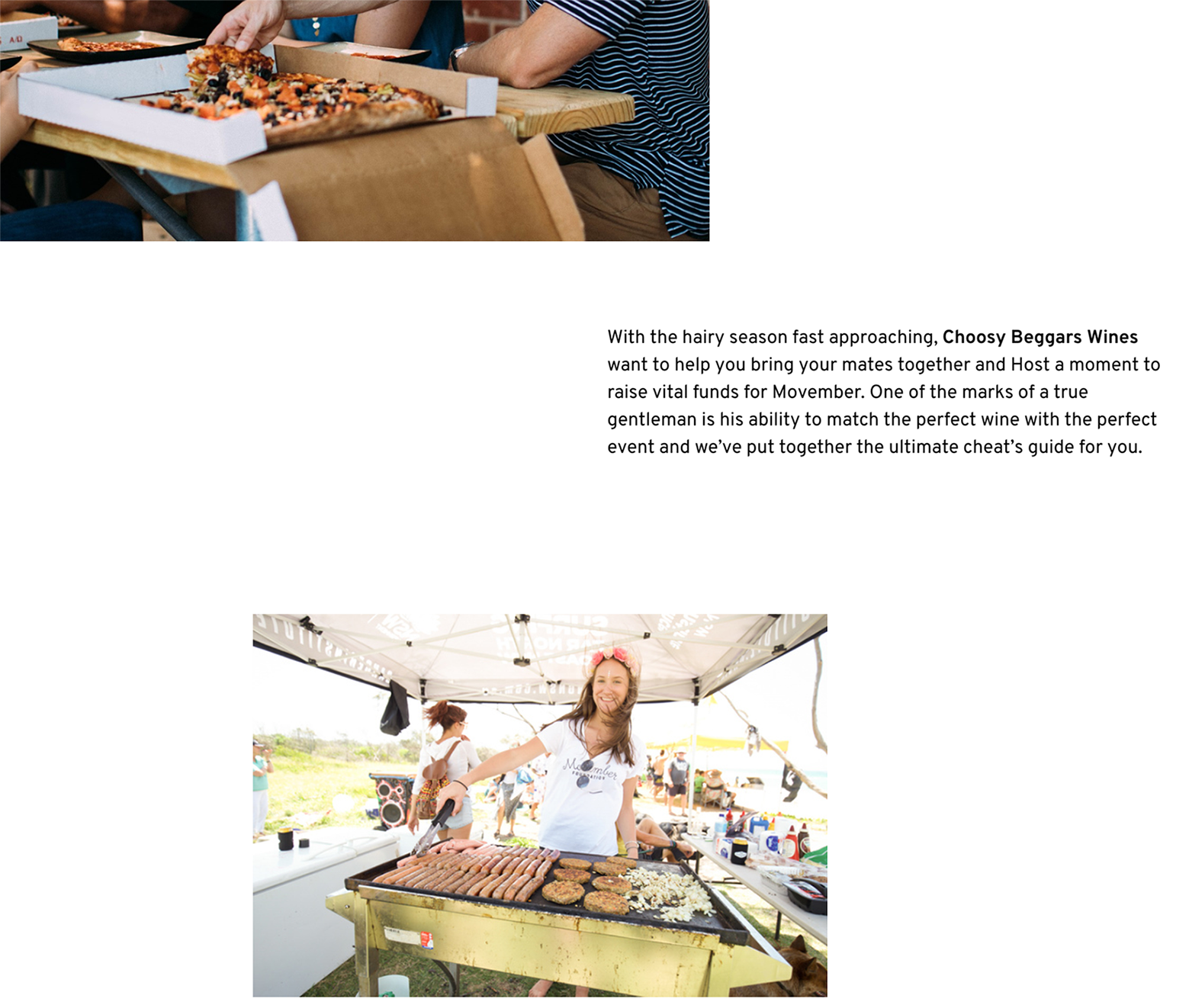
As these examples have highlighted, cause marketing can be an excellent way for not-for-profit organizations and businesses to work together to spread awareness or raise funds for a cause.
Changing the face of men’s health
As a not-for-profit organization, Movember operates with a lean budget while it works hard to raise funds and increase men’s health awareness in over 20 countries worldwide. In order to drive traffic with the greatest level of efficiency, while also adding value back to the community, the Movember Foundation has adopted the following strategies to ensure success:
- Using technology to facilitate growth;
- Creating a culture that seeks to constantly innovate;
- Targeting audiences with multi-channel marketing;
- Using humor to grab attention;
- Personalizing customer journeys, and
- Forming congruent partnerships with relevant businesses.
What started as a beer-fuelled conversation between mates has turned into a global movement that has done so much to raise awareness and funds for men’s health, thanks to some clever marketing.
If you work in a not-for-profit organization and are looking for marketing tips on how to raise more funds and create more impact in the world, check out our article: The 5 things that matter for fundraisers and not-for-profits.













